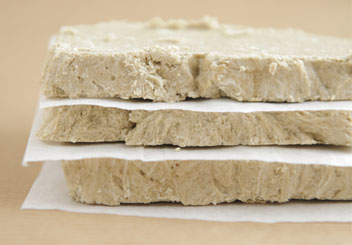 |
|
HalvaThe word halva entered the English language between 1840 and 1850 from the Yiddish halva which came from the Turkish helva. While it is disputed where it originated over 3000 years ago--some say India, others Turkey, others say it was definitely Byzantine--there is no doubt that halvah is one of the most common desserts in the world. The flaky, dense, tahini-based candy known to American and Israeli Jews is only one of hundreds of different types of halvah eaten across the globe. The term means "desserts" or "sweet", and describes two types of desserts:Flour-based – This type of halva is slightly gelatinous and made from grain flour, typically semolina. The primary ingredients are clarified butter, flour, and sugar. Nut-butter-based – This type of halva is crumbly and usually made from tahini (sesame paste) or other nut butters, such as sunflower seed butter. The primary ingredients are nut butter and sugar. Halva may also be based on numerous other ingredients, including sunflower seeds, various nuts, beans, lentils, and vegetables such as carrots, pumpkins, yams and squashes. Most types of halva are relatively dense confections sweetened with sugar or honey. Their textures, however, vary. For example, semolina-based halva is gelatinous and translucent, while sesame-based halva is drier and more crumbly.
|
|